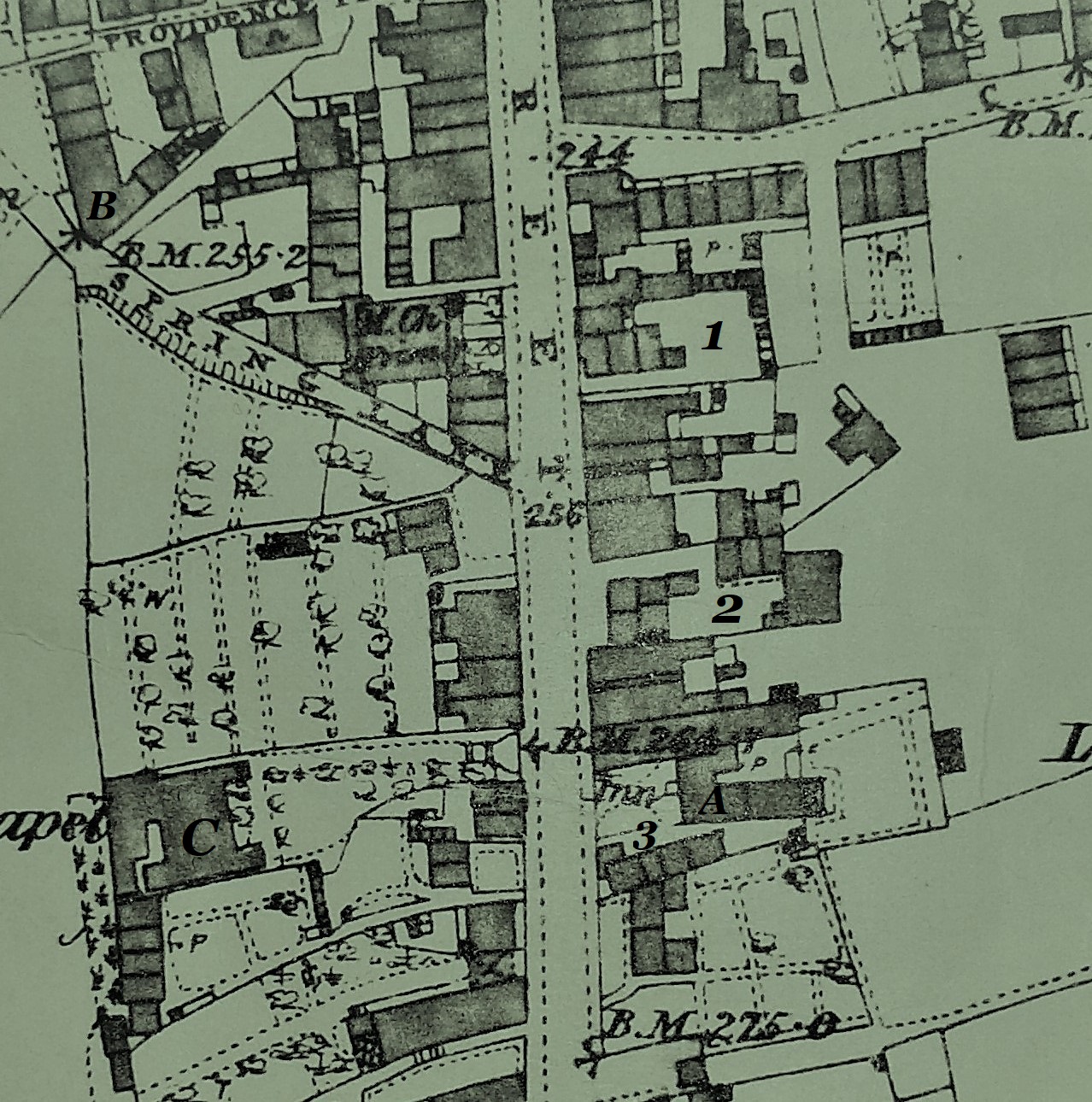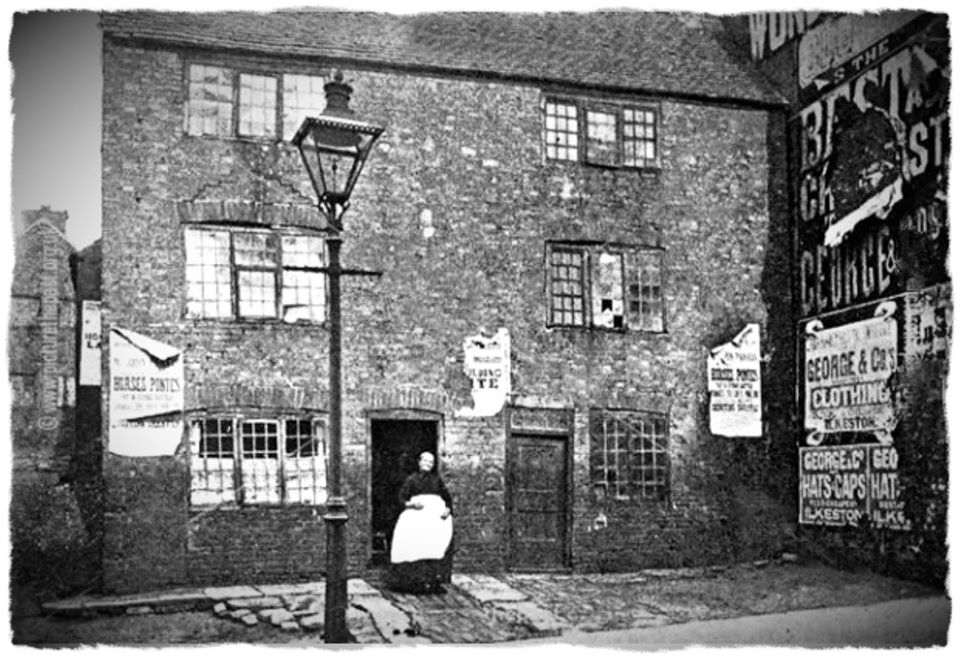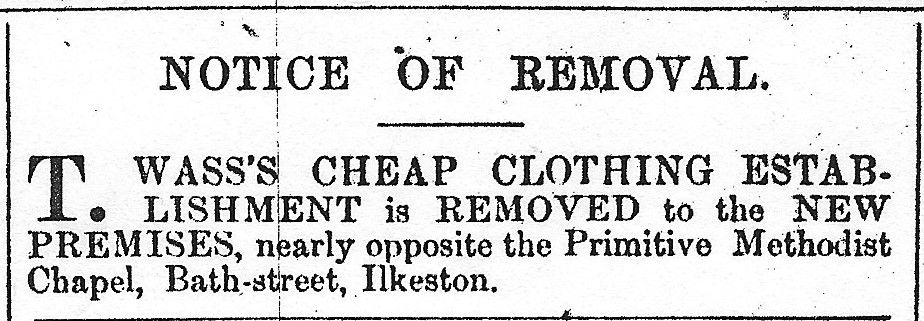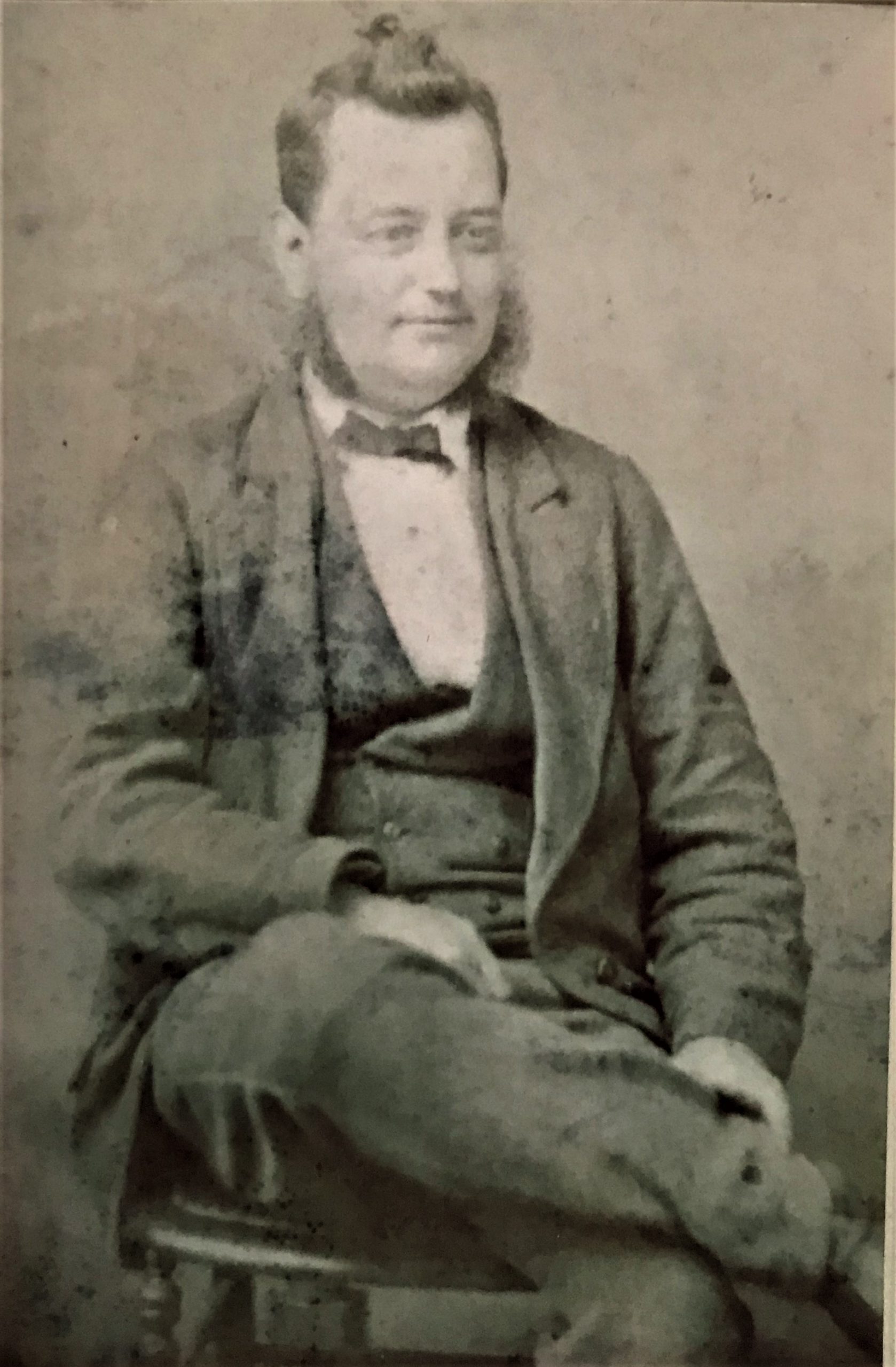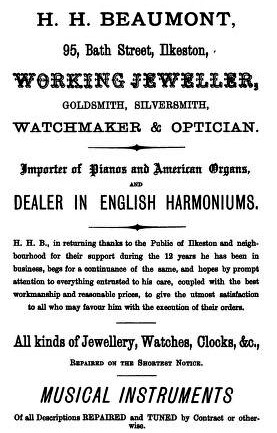At this point we can momentarily take stock of where we have been, where we are, and where we are going (especially for those of you not familiar with Ilkeston)
We are walking southwards, on the east side of Bath Street, from top to bottom of the map above. Chapel Street (244) is top/right and we have just left the murder scene at Smith’s Yard (1), across the road from which is the Primitive Methodist Chapel. Behind that chapel is the Spring Cottage Beerhouse (B) which we visit much later.
We are walking towards the Inn known as the Queen’s Head (A) and Bostock’s Row (3) …and across the road we can see the Wesleyan Methodist Chapel (C). In between Smith’s Yard and the Queen’s Head is another yard (2) known in 1881 as Whitt’s Yard but later as Sweep’s Yard.
Looking at Whitt’s Yard, you can see two, joined cottages, set back but with fronts to Bath Street.
Sweep’s Yard, formerly Whitt’s Yard, about 1890, looking from Bath Street. (Trueman and Marston)
————————————————————————————————————————
As we pass Smith’s Yard, Adeline tells us, “the next shop was a tailor and outfitter’s. Here lived Mr. and Mrs. Wass with their son and daughter. They attended the old Wesleyan Chapel in Market Street”.
A Victorian draper’s shop (from Charles Dickens’ Sketches by Boz‘)
Born in Alfreton, tailor Thomas Wass was the son of cutler Matthew and Hannah (nee Laycock), and married Elizabeth Norman, daughter of John and Ann (nee Grundy), in 1851. This was shortly after Thomas had moved from Warsop to Ilkeston, where son John was born in 1853.
In 1855-1858 he had a shop near to the British School.
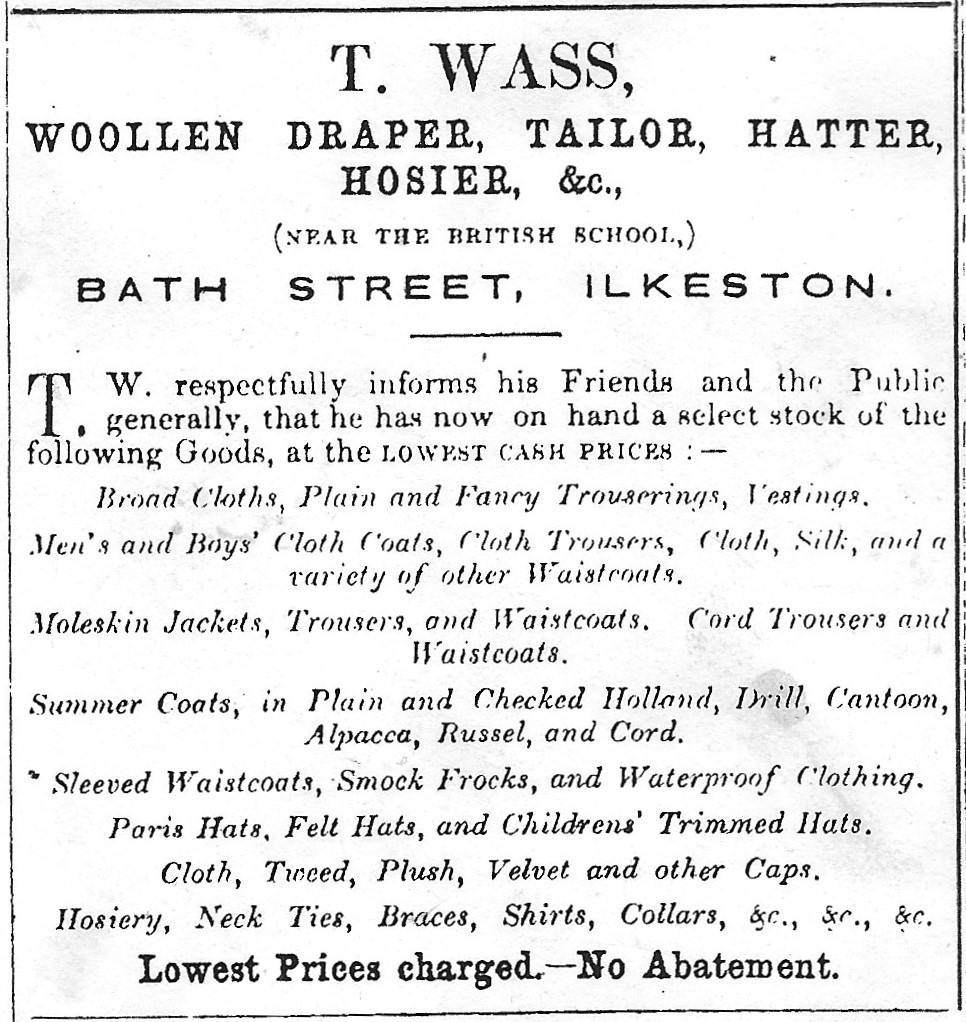 From the Ilkeston Pioneer, July 1855. © Trustees of NEWSPLAN2000
From the Ilkeston Pioneer, July 1855. © Trustees of NEWSPLAN2000
In July 1861 Thomas moved to new premises nearly opposite the Primitive Methodist Chapel in Bath Street. (below)
From the Ilkeston Pioneer July 11th, 1861
In 1866 son John died.
In 1870 the shop was taken over by clothier John Stinson and his father Charles. It was then 95 Bath Street.
The Wass parents eventually retired to Christchurch, Hampshire, where Thomas continued as a local Wesleyan preacher.
In November 1878 the shop was then occupied by jeweller, watchmaker and optician, Henry Beaumont.
With the renumbering of the premises in Bath Street about 1888, there were now only even numbers on this side, and Henry’s property was number 64. At the end of the century Henry left the street to live at Vernon House and the shop was then occupied by boot dealer John Silburn and his family, coming from Northamptonshire (where else ?!!)
—————————————————————————————————————————————
And close by was London House of Kitty Beardsley

